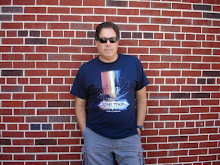Saturday, February 15, 2014
MISFITS, THE
(February 1961, U.S.)
I'll be the first to admit that I know almost nothing about Marilyn Monroe, perhaps the most iconic movie star of the 20th Century. In fact, this film and SOME LIKE IT HOT (1959) are the only two of her's that I own in my collection. Sure, over the years, I've heard all of the sensationalized stories and folklore about her life and her death, but hardly a thing on who she was as an actress. Frankly, if you were to really watch much of her material, it's doubtful that the woman even could act, but was rather just the glorified sex symbol society made her out to be and nothing more. However, when watching her performance in John Huston's THE MISFITS, it's impossible to ignore that the girl was definitely coming into her own. This was Monroe's last completed film before she died of a drug overdose in 1963. As her swan song, it's perfect because it may have finally proven to the world that she could be taken seriously as an actress. At the same time, it's tragic, because having never had the chance to perform again, we'll never truly know what she might have been capable of had her film career continued.
THE MISFITS was not only the final film for Monroe, but for its leading man Clark Gable, as well, who died of a heart attack after filming wrapped. The story centers on recently divorced woman Roslyn Tabor (played by Monroe) and her time spent with cowboy Gay Langland (played by Gable) and friends Perce Howland (played by Montgomery Clift) and Guido (played by Eli Wallach) in the Western Nevada desert of the 1960s. Each of these lost, misfit characters appear to be running away or seeking to forget a painful past, as well as an uncertain future. Their time together is spent drinking, dancing, driving, roping stallions and losing themselves in the vast open plains of the great desert around them. Like John Ford's outdoor filming style, director John Huston beautifully captures the beauty of the isolated American landscape in glorious black and white. It's an environment like this that one can escape the pressures and pains of the outside world. This film, perhaps, attempts to show that when you're escaping in the company of other people who are as lost as you, there's the hope of being saved.
Now, Marilyn being, of course, Marilyn, is beautiful and outrageously sexy in whatever she does, so she's naturally a desirable catch for all three men who share her time. Because her character reveals that her father wasn't around much when she was a child, her "daddy issues" naturally draws her closer to the aging cowboy of Gable's character. Gable, by the way, was a movie star Marilyn had worshiped her whole life, so it's easy to see how enthralled she is to be close to him in this film. While we're meant to get involved in the lives of all these characters, it's primarily Roslyn that we can't seem to let go of. She's a woman who hurts deeply, and yet still strives to find positive beauty and joy in all things around her. She hurts for others who hurt, both mentally and physically. She hurts for the horses that are chased and roped by her cowboy friends. But even as she hurts this much, we remain unclear as to whether or not she can be saved by the end of the film and learn to be truly happy.
I'd like to take a moment now to focus on Monroe's character a bit more and express my deep appreciation for how she appears phystically in this film. To have grown up seeing countless images of her means having seen sensationalized pin-up photos of her that looked like this...
In THE MISFITS, that entire public images persona seems to have been stripped down to a very natural, undisturbed beauty that also hides a great deal of pain and suffering. Study carefully this image of Monroe and you can see not only a pain that's portrayed in the film's character, but a real pain the great movie star must have been struggling with right up until the day she died...
I'd also like to bring to your attention the stallion roping sequence by the film's end. Aesthetically, it's a beautifully-shot sequence, but it's message is clear to Roslyn who hurts for all those around her, including stallions. To watch the torture of these animals that are meant to run free across the land is a stake through her own heart because she ultimately yearns for her own unobstructed freedom. To watch these animals get roped and tied down is a physical torture for her and these men in her life actually come to understand the metaphor in the end because by releasing the horses, they not only release Roslyn's pain and anguish, but come to realize the potential for their own happiness and freedom, as well. We're also reminded that in the end, the great open plains of the desert hold enough space for all human freedoms concerned.
And that, my friends, is about as deep as I thought I could ever get about a Marilyn Monroe film. You see? Anything's possible!
Favorite line or dialogue:
Roslyn Tabor: "If I'm going to be alone, I want to be by myself."
Subscribe to:
Post Comments (Atom)





No comments:
Post a Comment